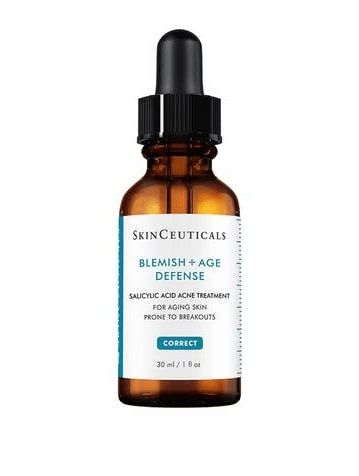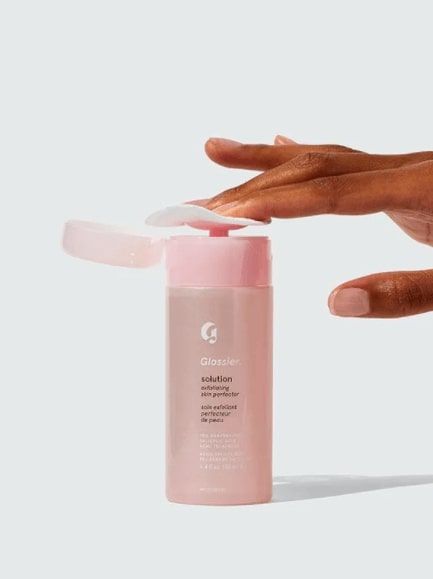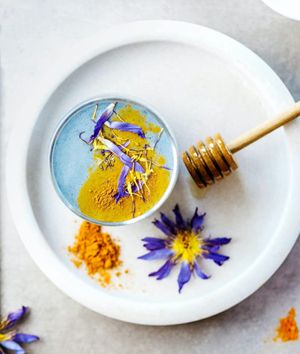Disclaimer: This article is not meant to provide any medical advice.
Salicylic acid is a popular ingredient in skincare products. It can be found in everything from cleansers and masks to toners and moisturizers. If you've never used salicylic acid before, then this article will help you understand how it can benefit your skin. We'll discuss why salicylic acid is important for acne-prone skin, as well as the best way to use salicylic acid based on your skin type.
We hope that our discussion of salicylic acid will give you an idea of how it might work for your unique needs!
As you might have heard of salicylic acid before – it’s the product that everyone reaches for when acne and zits make an appearance. But does it actually work? And how should you use it?
What is salicylic acid?
Salicylic acid is a beta hydroxy acid that’s originally derived from willow bark. It belongs to a class of ingredients called salicylates. It’s what’s known as a BHA, which means that it’s more oil-soluble and can penetrate into pores.
Oil-soluble ingredients generally penetrate through the lipid layers between skin cells more readily than their water-soluble AHA counterparts. The main difference between AHAs and BHAs is that AHAs work on the surface to loosen old, dead skin cells and reveal fresh skin underneath. BHAs like salicylic acid works deeper and is able to penetrate further into the pores, unclogging them.
How is it different?
Salicylic acid sits within the skincare acid family, but it is different from others. Glycolic, lactic and mandelic are all alpha hydroxy acids, whereas salicylic is classified as a beta hydroxy acid (and the only one used in skincare).
You can buy salicylic acid in a range of prescription and nonprescription medications. It’s suitable for use on all skin types. Especially effective on blemish-prone and uneven skin types, as salicylic acid helps to prevent pore blockages, and has anti-inflammatory properties.
Salicylic acid is also a key additive in many skin-care products. It is used for acne treatments, psoriasis, callouses, corns, keratosis pilaris, dandruff and warts.
How can salicylic acid help your skin?
The deep penetration into the skin topical salicylic acid can achieve is what makes it so good at targeting acne, zits, blackheads and whiteheads. It dissolves the skin debris that clogs pores, acts as an anti-inflammatory, and helps to reduce redness and pustules.
Salicylic acid can even break down the connections between skin cells. This makes it great for promoting exfoliation, used for softening and sloughing the top layer of skin cells. Another thing that it does for the skin is to break apart desmosomes. Desmosomes are the attachments between cells in the outer layer of skin, which also encourages exfoliation of skin and unclogging of pores.
Salicylic acid is best used for treating blackheads and whiteheads as it can directly dissolve the keratin plugs and regulate skin cells.
Although no one cause of acne has been identified, one school of thought is that the skin cells don’t experience a normal skin cycle. It’s been suggested that rather than sloughing off dead cells through a normal, healthy skin cycle that they may stick together and clog the pores, therefore causing cysts and blackheads. The way salicylic acid works is that it helps to loosen and remove the dead skin cells and dissolve the blackheads.
Who should avoid using topical salicylic acid?
It’s possible to overuse topical salicylic acid products, which can be problematic. Using too much salicylic acid may irritate and dry out the skin – particularly for those with sensitive skin. It’s also possible for some people to experience an allergic reaction, hyperpigmentation, and skin irritation as a result of using this ingredient.
Depending on the concentration and the number of applications of topical salicylic acid, some people may experience dryness, peeling, redness, and some skin irritation. It’s also may not be the best choice for those who are pregnant, breast feeding, or taking certain medications such as methyl salicylate and (or)including blood thinners. Always talk to your doctor about possible drug interactions and if you’re uncertain about whether or not you’re safe to incorporate a topical salicylic acid product into your acne treatment routine.
Most importantly, applying salicylic acid or any salicylate to very large portions of your body can lead to salicylate poisoning. Only apply it to the areas that need to be treated, don’t just apply it all over. Please seek emergency medical help immediately and contact your local poison control center if that's the case.
Anyone with an allergy to aspirin should avoid products containing salicylic acid, as they both belong to the same family of compounds and it could cause a reaction.
What are the best salicylic acid-containing skin-care products to use for acne?
Like most skincare routines, it really does depend on the individual and their skincare needs and skin conditions. It may be a case of using an acne wash that contains salicylic acids or just a spot acne treatment when applied early for mild acne.
The FDA allows manufacturers to make acne-fighting claims for products that contain salicylic acid if they use it at levels between 0.5 percent and 2 percent. This is the concentration you’ll find in over-the-counter products. For chemical peels performed at the dermatologist’s office, the concentration may be as higher concentrations of 20 to 30 percent.
Traditionally, topical salicylic acid has been widely used in on-the-spot blemish gels and treatments, but now it’s often used for prevention as well as cure. A topical salicylic acid cleanser is a good ally for acne-prone skin types. It’ll help keep pores clear, preventing breakouts before they occur. A serum is another good option, while easily overloaded skin will love a water-weight toner or treatment mist – definitely an important point to consider if your skin is congested.
Is salicylic acid better at treating acne than benzoyl peroxide?
Benzoyl peroxide is another skincare product that’s commonly used to treat acne. It works as an antiseptic to reduce the number of germs (bacteria) on the surface of your skin. The product you choose out of these two common acne-busting ingredients will depend on various factors, including:
- The type of acne you have – salicylic acid is more effective for blackheads and whiteheads. Benzoyl peroxide works well for mild pustules.
- The severity of your breakouts – both ingredients are intended for mild breakouts, and they can take several weeks to take full effect. Benzoyl peroxide, though, might show some benefit as an emergency spot treatment.
- Your activity level – If you’re active during the day, sweat can transfer benzoyl peroxide to your clothing and stain it. You may consider using related products only at night or using salicylic acid instead.
- Your overall skin health – salicylic acid is milder and may not aggravate sensitive skin as much as benzoyl peroxide.
- Any underlying medical conditions – although both ingredients are available over the counter, this doesn’t mean they’re safe for everyone. Double-check with your doctor if you have an underlying skin condition. You should also talk to your doctor if you have kidney disease, diabetes, or liver disease.
In short, topical salicylic acid can be a great choice for those struggling with congested or acne-prone skin, without being as damaging as some other treatments out there.
Salicylic Acid Products

Regular Strength Anti-Redness Exfoliating Solution With 2% Salicylic Acid by Paula's Choice
The gentle water-light formula of this acne exfoliant with salicylic acid clears breakouts, unclogs, and minimizes pores. It also fades red marks from past acne outbreaks. The fast results make it perfect for those looking to get their skin back in shape as quickly as possible!

Blemish + Age Defense by SkinCeuticals
This first-to-market acid blend combines 2% dioic acid with an optimal alpha- and beta hydroxy acids formulation to reduce the formation of acne, clogged pores while improving fine lines. It also decongests those blocked-up skin cells that are holding dirt inside them, leaving you with a clear complexion!
Solution, exfoliating skin perfector by Glossier

Solution is a gentle way to slough away dead skin, revealing your smoother and more glowing complexion. Unlike physical scrubs which just scratch your skin with rough particles, Solution uses specially selected acids from three different groups: alpha hydroxy acid (AHA), beta hydroxy acid (BHA) polyhydroxy acid(PHA). Together they work synergistically removing any dirt, clogged pores, exfoliating old cells, and leading toward clearer looking healthy skin!
Summary and FAQ
Salicylic Acid, is a naturally occurring compound. A clear liquid, it’s also a metabolite of and an active precursor of aspirin. The name, derived from Latin willow tree. It’s a popular ingredient in many anti-acne medications. Salicylic acid is used primarily for treating acne, but its topical application has been shown to have advantage in eczema, seborrheic dermatitis, and psoriasis.





